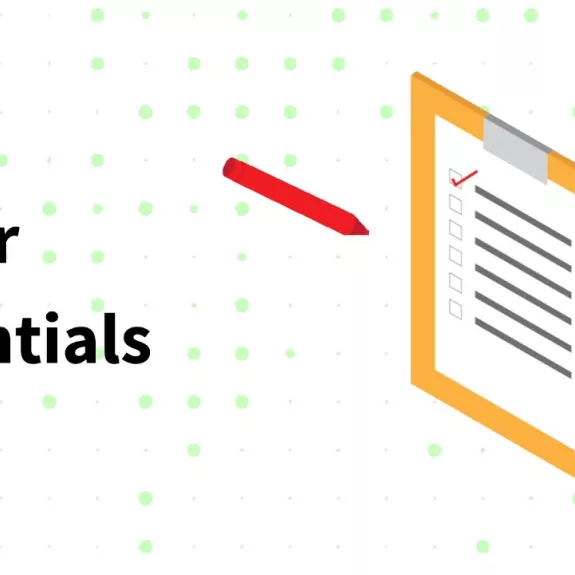1. Introduction to Cyber Essentials
What is Cyber Essentials?
The Cyber Essentials Scheme is a UK government-backed initiative designed to help organisations of all sizes, across all industries protect themselves against the most common cyber threats. It provides a clear set of guidelines and measures that organisations can follow to enhance their cyber security. If the organisation meets these requirements, they will receive the Cyber Essentials accreditation which is valid for a year, before there is a requirement to re-certify against the accreditation.
Importance of Cyber Essentials for Businesses
In today’s digital age, cyber security is not just an IT concern but a business imperative. Cyber Essentials offers a cost-effective way for organisations to defend themselves against cyber attacks, ensuring the safety of their data and operations.
Having a Cyber Essentials accreditation has become crucial in today’s age as it demonstrates an organisation's dedication to cyber security and protecting their assets/data. Many organisations will now refrain from partnering or working with organisations that have not achieved their Cyber Essentials accreditation. That means not being Cyber Essentials accredited could lead to lost business opportunities and strategic partnerships.
2. Benefits of having the Cyber Essentials Accreditation
- Enhanced Security Measures – Having the Cyber Essentials Accreditation ensures that your organisation is protected against a wide range of cyber threats, reducing the risk of a security breach.
- Customer Trust and Confidence - Being Cyber Essentials certified proves to your customers and clients that you take cyber security seriously, enhancing your reputation and trustworthiness.
- Competitive Advantage – The Cyber Essentials Accreditation sets you apart from competitors by showcasing your commitment to cyber security.
- Reduced Cyber Insurance Premiums - Many insurers offer discounts to organisations that have the Cyber Essentials accreditation, as it indicates a lower risk of cyber incidents.
- Clarity Over Your Cyber Security Level – The Cyber Essentials accreditation gives you a clear picture of your organisation's current cyber security level, allowing you to make the necessary adjustments and improvements, where required.
3. Understanding Cyber Threats and Vulnerabilities
Common Cyber Threats That Organisations Face
Organisations face a variety of cyber threats including:
Phishing - Phishing is a type of cyber attack where bad actors attempt to deceive individuals into providing sensitive information, such as usernames, passwords, or credit card details, by posing as a trustworthy individual. This is usually done through email, social media, or other online communication channels.
Malware - Malware, short for malicious software, is any software intentionally designed to cause damage to a computer, server, client, or computer network. It includes viruses, worms, trojans, spyware, adware, and more.
Ransomware - Ransomware is a type of malware that encrypts the victim's files or locks them out of their system, and then demands a ransom payment to restore access. It can be devastating for both individuals and organisations alike.
These are just three common cyber threats but there are many more. Understanding these threats is the first step in defending against them.
Identifying Vulnerabilities in Your Systems
Regularly assessing your systems for vulnerabilities is crucial. This includes checking for outdated software, weak passwords, and unpatched systems. We offer a Cyber Security Audit, which provides a 360 view of your IT environment. We will conduct an in-depth review covering 6 key areas to identify high-risk issues that could leave you vulnerable to cyber attacks. These key areas are:
- Internal Infrastructure Review
- Microsoft 365 Phishing and Impersonation
- Dark Web Scan
- Microsoft 365 Security Review
- Copilot Readiness Assessment
- Cyber Essential Gap Analysis
As part of the audit, we will outline weaknesses within your IT environment, key areas for improvement, and we will provide expert recommendations to help strengthen your IT security.
4. The Cyber Essentials Framework
What is the Cyber Essentials framework?
The Cyber Essentials framework is built around five key security controls: Firewalls, Secure Configuration, User Access Control, Malware Protection, and Patch Management. Let’s explore each:
1. Firewalls
Purpose: Firewalls act as a barrier between your internal network and external networks (such as the internet), controlling incoming and outgoing traffic based on predetermined security rules. Implementation Tips:
- Use a firewall to protect your internet connection.
- Configure firewall rules to block unauthorised access and only allow necessary services.
- Regularly update firewall firmware and software to patch vulnerabilities.
- Use network address translation (NAT) to hide internal IP addresses from external entities.
2. Secure Configuration
Purpose: Secure configuration involves setting up computers and network devices to reduce the risk of exploitation by ensuring they are not using default or insecure settings.
Implementation Tips:
- Develop a secure baseline configuration for all devices and regularly audit them
- Disable unnecessary services and ports
- Apply patches and updates promptly
- Use configuration management tools to automate and enforce secure settings
3. User Access Control
Purpose: User access control ensures that only authorised individuals have access to systems and data, preventing unauthorised access and potential data breaches. Implementation Tips:
- Use strong password policies and require periodic password changes
- Implement multi-factor authentication (MFA) for sensitive systems and data
- Regularly review user access permissions and remove unnecessary privileges
- Use role-based access control (RBAC) to manage user access
4. Malware Protection
Purpose: Malware protection involves deploying software and practices to detect, prevent, and respond to malicious software that could harm your systems.
Implementation Tips:
- Install reputable antivirus and anti-malware software on all devices
- Schedule regular scans and enable real-time protection features
- Educate users about safe browsing practices and how to recognise phishing attempts
- Regularly update malware protection software to the latest version.
5. Patch Management
Purpose: Patch management ensures that all software and systems are kept up to date with the latest security patches and updates, protecting against known vulnerabilities.
Implementation Tips:
- Create a patch management policy that outlines the process for identifying, testing, and applying patches.
- Use automated patch management tools to streamline the process.
- Prioritise patches based on the severity of vulnerabilities and potential impact on your systems.
- Ensure all software, including third-party applications, is covered by your patch management process.
By implementing these five security controls effectively, organisations can significantly reduce their risk of falling victim to cyber attacks and demonstrate their commitment to cyber security through obtaining a Cyber Essentials accreditation.
5. The Certification Process
Steps to Achieve Cyber Essentials Certification
- Self-Assessment Questionnaire: Complete a questionnaire covering the five key controls.
- External Vulnerability Scan: Some certification bodies require an external scan to check for vulnerabilities.
- Submission and Review: Submit your questionnaire and any required evidence to an accredited certification body for review.
Preparing for the Assessment
- Review the Guidelines: Ensure you understand the requirements.
- Conduct Internal Audits: Regularly audit your systems to ensure compliance.
- Implement Necessary Changes: Address any gaps in your security measures.
Choosing an Accredited Certification Body
Select a certification body that is recognised by the National Cyber Security Centre (NCSC). Check their experience and reviews to ensure they are reputable.
6. Cyber Essentials vs. Cyber Essentials Plus
Differences Between Cyber Essentials and Cyber Essentials Plus in a nutshell:
Cyber Essentials: Self-assessment-based certification Cyber Essentials Plus: Includes an independent assessment and on-site testing
Cyber Essentials is the basic level of certification, primarily based on a self-assessment. Organisations complete an online questionnaire that covers the implementation of the five key security controls: firewalls, secure configuration, user access control, malware protection, and patch management. This self-assessment is then verified by an independent certification body. Cyber Essentials is ideal for smaller businesses or those new to cyber security, offering a straightforward and cost-effective approach to improving their security posture.
Cyber Essentials Plus, on the other hand, provides a higher level of assurance. In addition to the self-assessment questionnaire, Cyber Essentials Plus includes an independent, hands-on technical verification. An external assessor conducts a series of tests on your systems, including vulnerability scans and on-site assessments, to ensure that the five security controls are not only implemented but are also functioning effectively. This level of certification is suited for organisations requiring a more rigorous assessment of their cyber security measures, often due to handling sensitive data or operating in higher-risk sectors.
Deciding Which Certification is Right for Your Organisation
While both certifications help to protect organisations against common cyber threats and demonstrate their commitment to cyber security, Cyber Essentials Plus offers a more robust validation through independent verification, providing greater confidence to customers, stakeholders, and regulatory bodies. Consider the size of your organisation, the sensitivity of your data, and your budget. Cyber Essentials is a good starting point, while Cyber Essentials Plus offers a higher level of assurance.
7. Implementing Cyber Essentials Controls
Practical Tips for Implementing Each Security Control
Firewalls: Configure your firewall settings to block unauthorised access.
Secure Configuration: Remove or disable unnecessary accounts and services.
User Access Control: Implement strong password policies and multi-factor authentication (MFA).
Malware Protection: Install reputable anti-virus software and keep it updated.
Patch Management: Regularly update your operating systems and applications.
Tools and Resources to Aid Implementation
Utilise cyber security tools such as vulnerability scanners, password managers, and automated patch management solutions.
8. Maintaining Compliance and Staying Secure
Regular Security Audits and Reviews
Schedule regular Cyber Security Audits to ensure ongoing compliance with Cyber Essentials controls. Use the findings to continuously improve your security posture.
Keep Up with Cyber Security Best Practices
Stay informed about the latest cyber security threats and best practices. Participate in cyber security training and awareness programmes.
Cyber Essentials as a Service
Our Cyber Essentials as a Service solution allows you to maintain year-round compliance for all your endpoints against the Cyber Essentials requirements, including Cyber Essentials Plus. This service is fully managed by us so that you can focus on your core operations whilst feeling reassured that your cyber security, including Cyber Essentials/Plus accreditation, is in good hands.
9. FAQs About Cyber Essentials
Common Questions and Answers
Q: What is the main difference between Cyber Essentials and Cyber Essentials Plus?
A: Cyber Essentials is a self-assessment certification where organisations complete an online questionnaire about their cyber security practices. This self-assessment is then reviewed by an external certification body. Cyber Essentials Plus includes all the requirements of Cyber Essentials but also involves an independent, technical verification of the organisation’s cyber security measures through on-site assessments and vulnerability scans, offering a higher level of assurance.
Q: How long does the Cyber Essentials Accreditation last?
A: Both Cyber Essentials and Cyber Essentials Plus certifications are valid for one year. To maintain certification, organisations must renew annually, ensuring they continuously meet the cyber security standards set by the scheme.
Q: How much does it cost to obtain Cyber Essentials certification?
A: The cost of Cyber Essentials certification varies depending on the size of the company and the certification body chosen. For smaller organisations, the cost of Cyber Essentials can start at around £300, while Cyber Essentials Plus typically costs more due to the additional independent assessment and testing, with prices often starting around £1,500.
Q: Is Cyber Essentials suitable for small businesses?
A: Yes, it is designed to be accessible for businesses of all sizes.
Q: Can we achieve the Cyber Essentials Accreditation without an in-house IT team?
A: Yes, many SMEs without an in-house IT team successfully achieve the Cyber Essentials accreditation by working with third-party IT service providers, like Sharp. These providers can help implement the necessary cyber security controls, complete the self-assessment, and prepare for the independent verification required for Cyber Essentials Plus.
Q: What are the benefits of achieving Cyber Essentials certification?
A: Achieving Cyber Essentials certification offers several benefits, including improved protection against common cyber threats, enhanced customer trust, a competitive advantage, and potential reductions in cyber insurance premiums. Additionally, it demonstrates an organisation’s commitment to cyber security, which can be particularly beneficial when bidding for contracts, especially with government agencies and larger enterprises that require suppliers to have robust cyber security measures in place.
10. Conclusion
Achieving Cyber Essentials accreditation is a crucial step in protecting your organisation from cyber threats. It not only enhances your security but also boosts customer trust and provides a competitive edge.
Don’t wait for a cyber attack to happen. Start the journey towards your Cyber Essentials accreditation today and safeguard your organisation’s future.
11. Additional Resources
Visit the official Cyber Essentials website and the National Cyber Security Centre for more detailed guidance.





